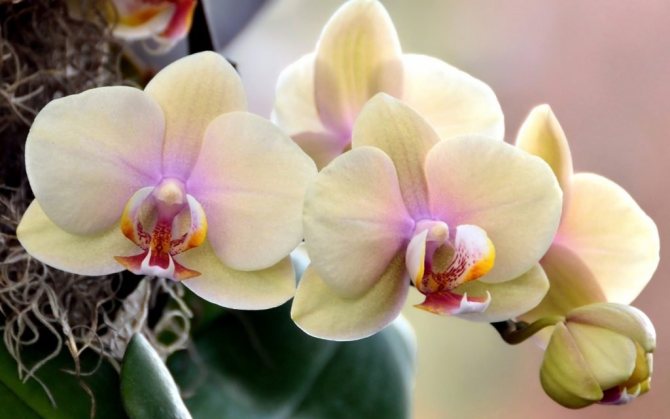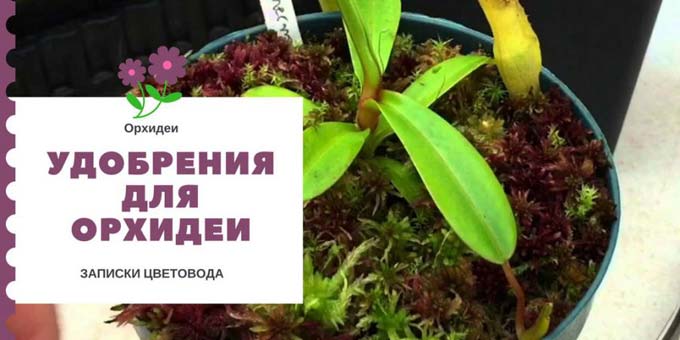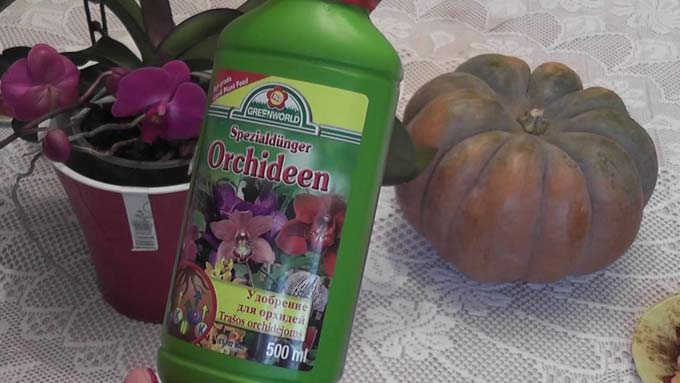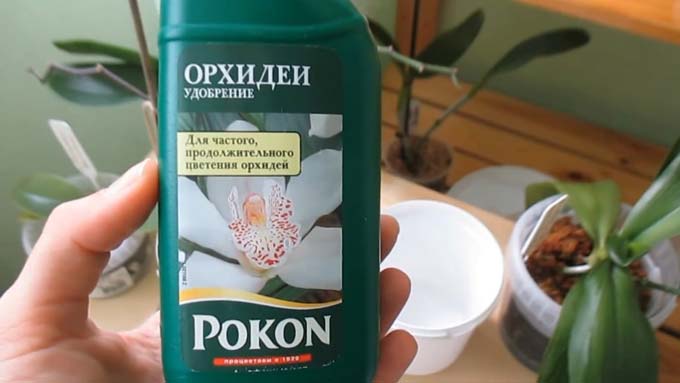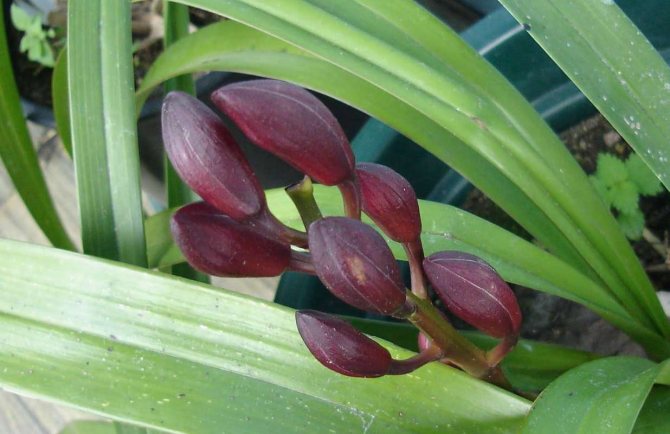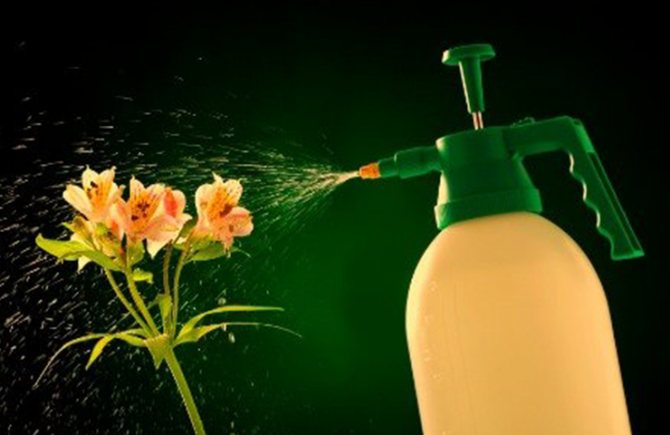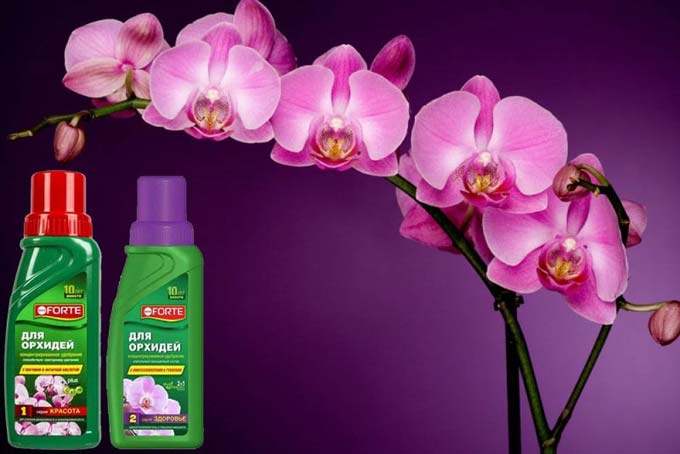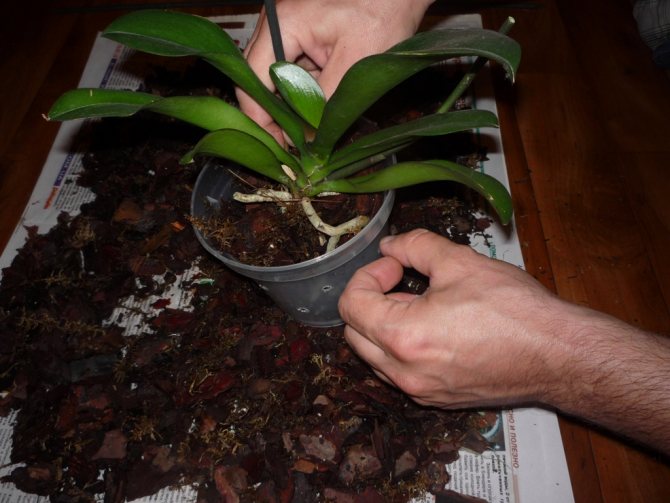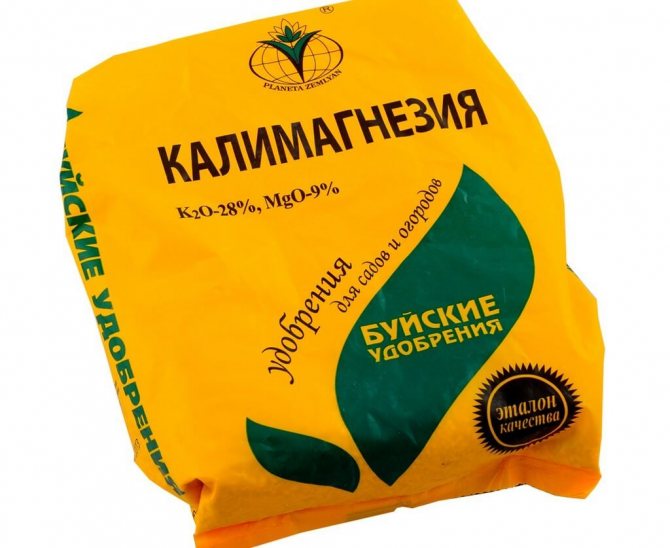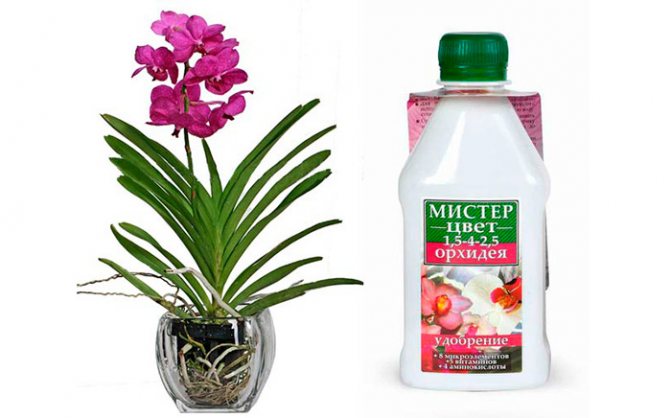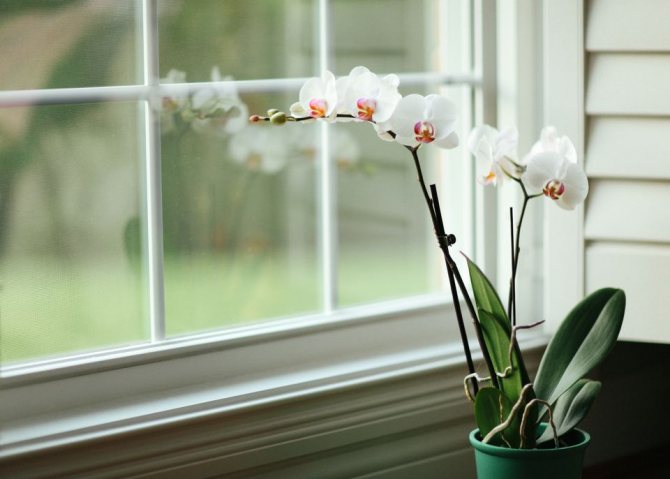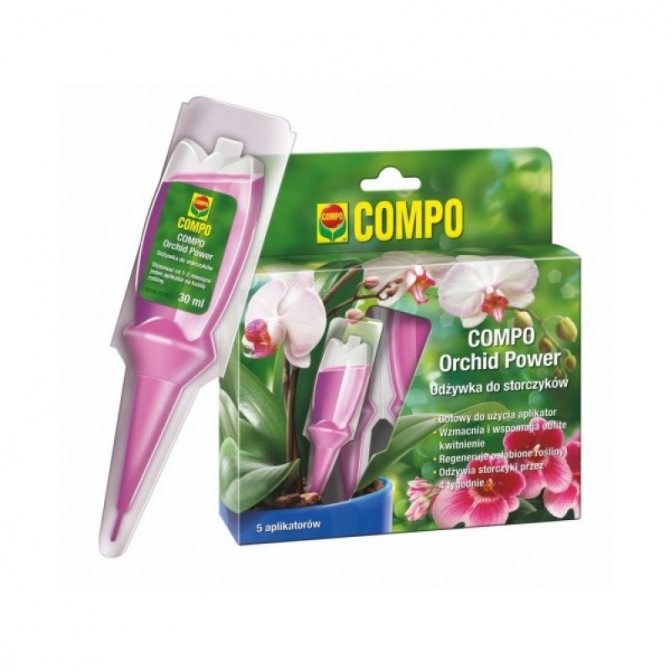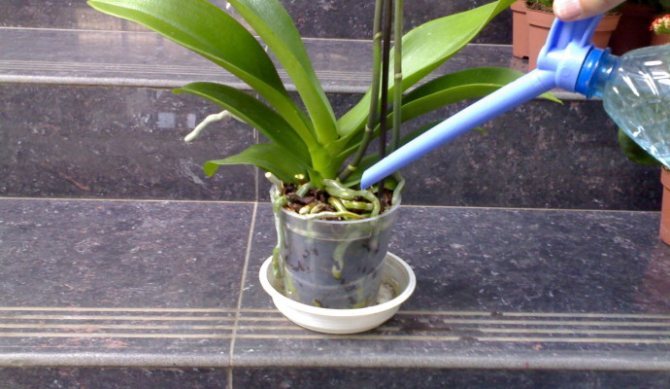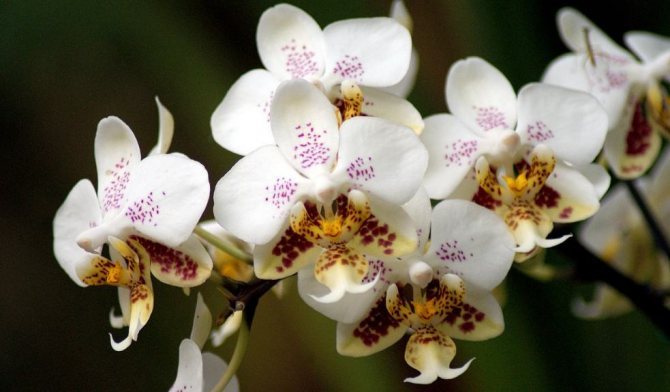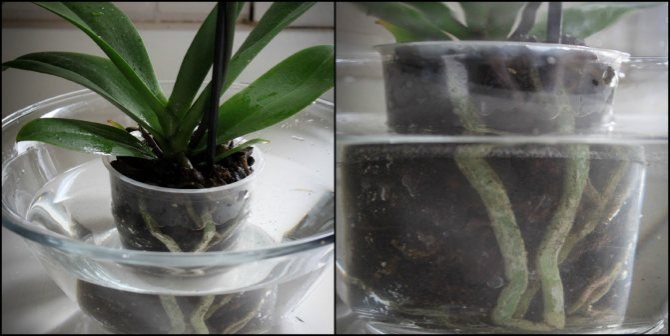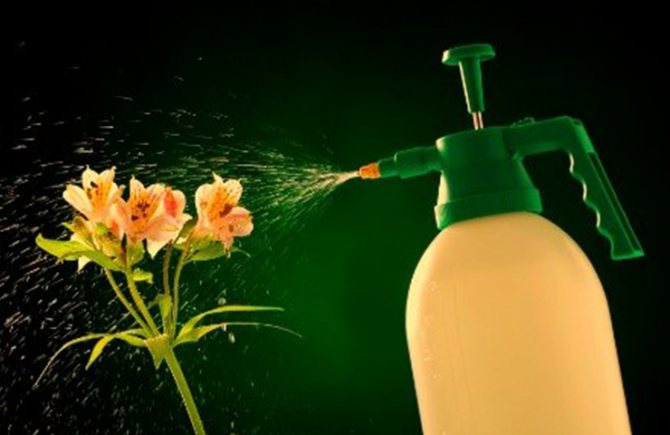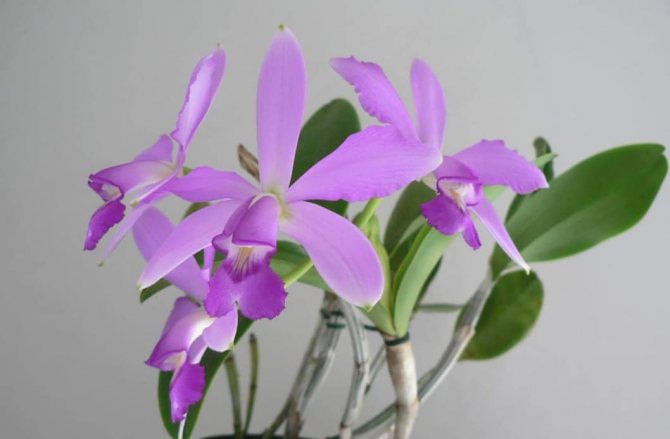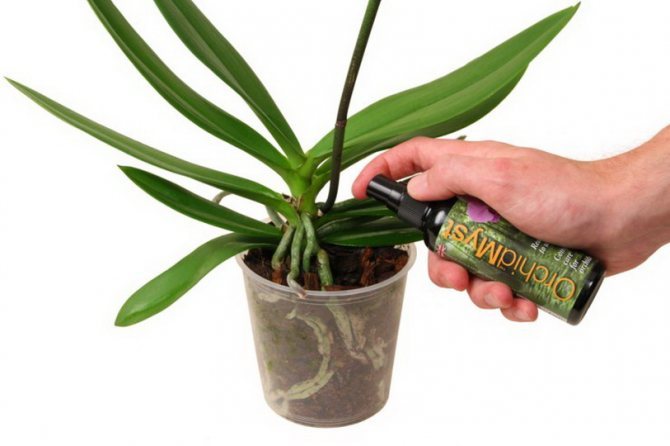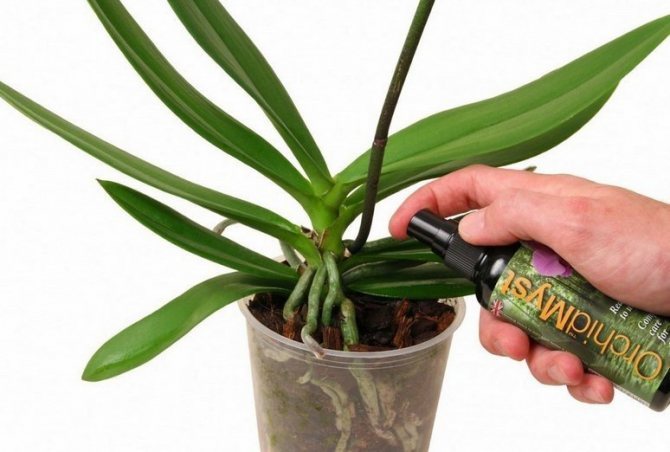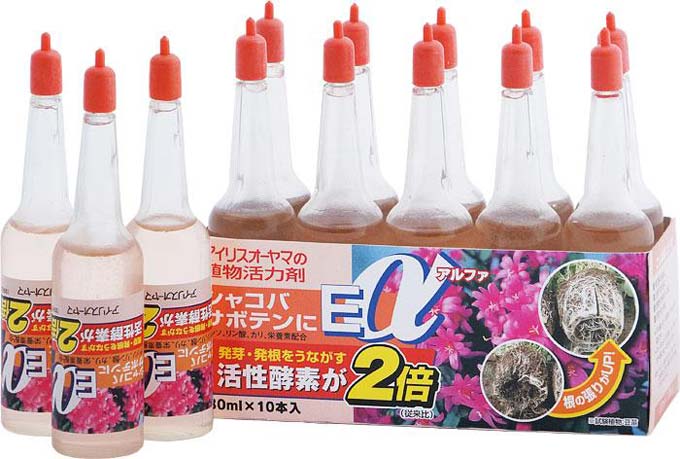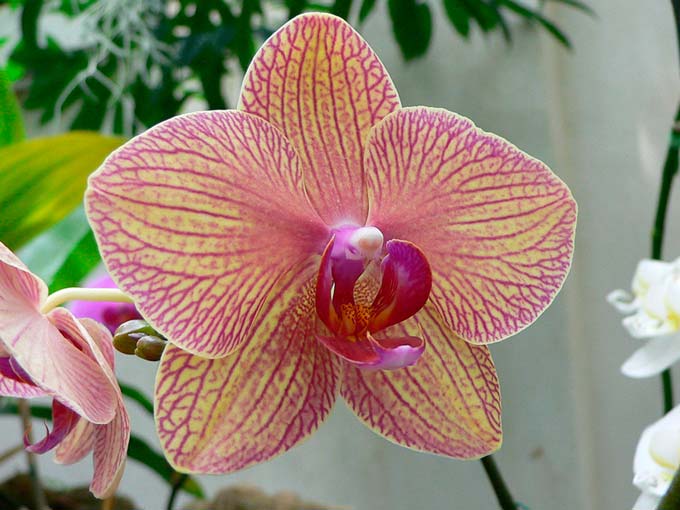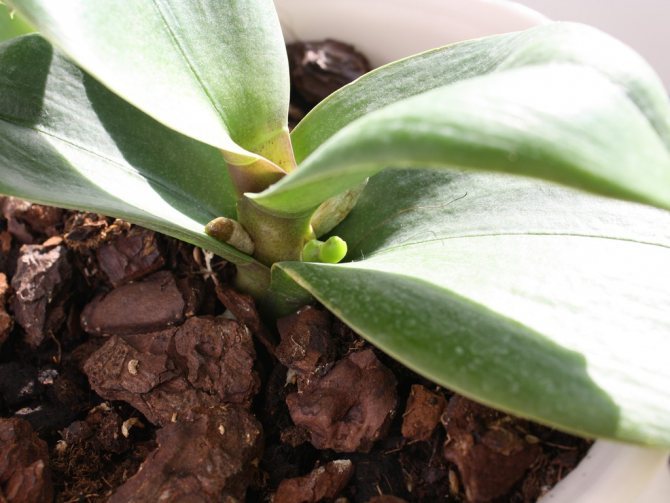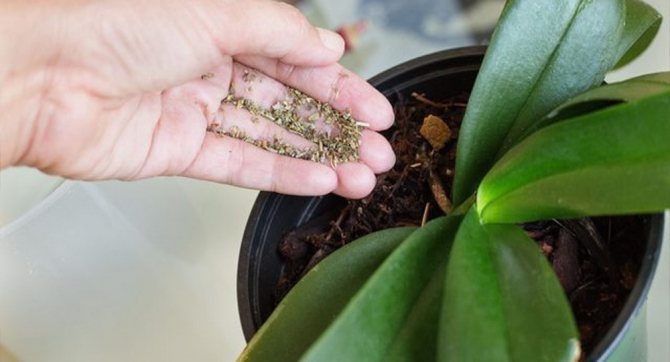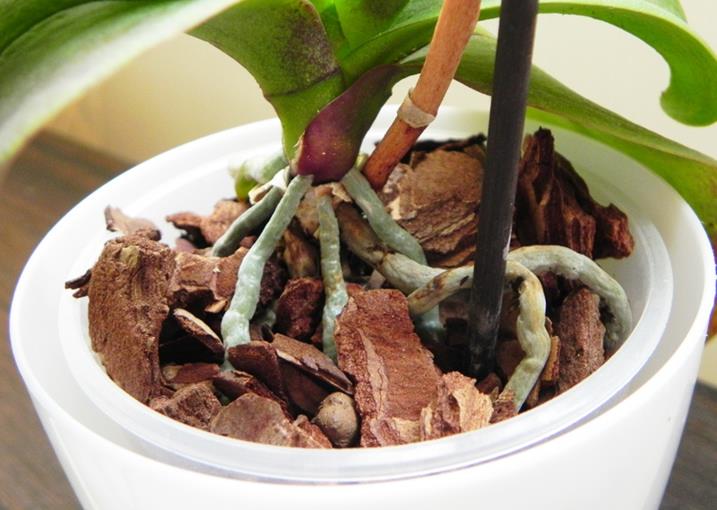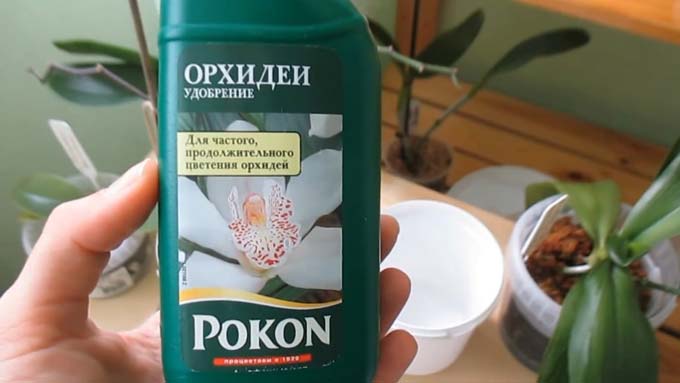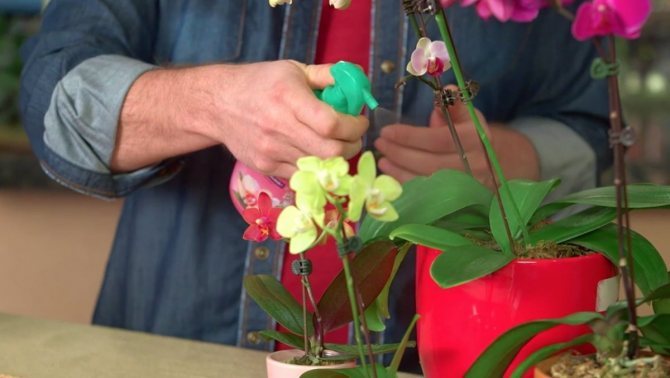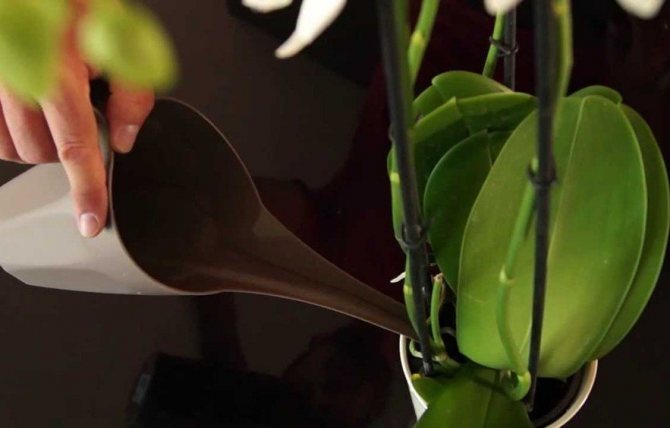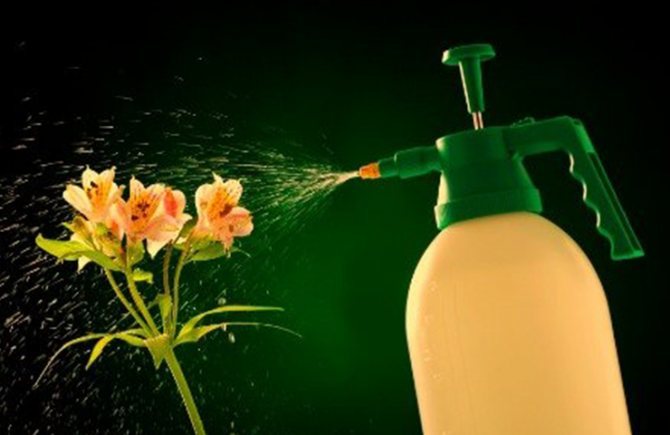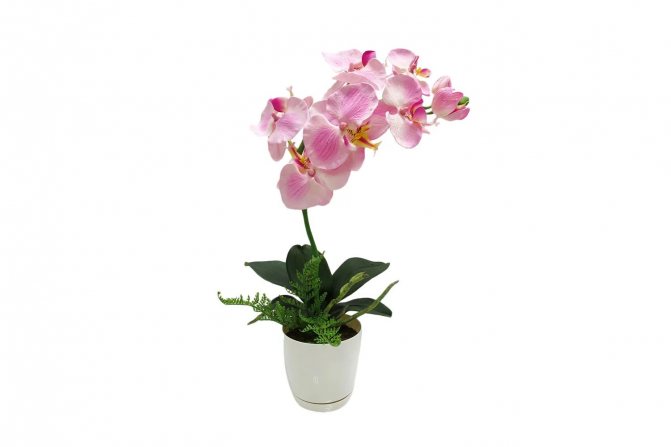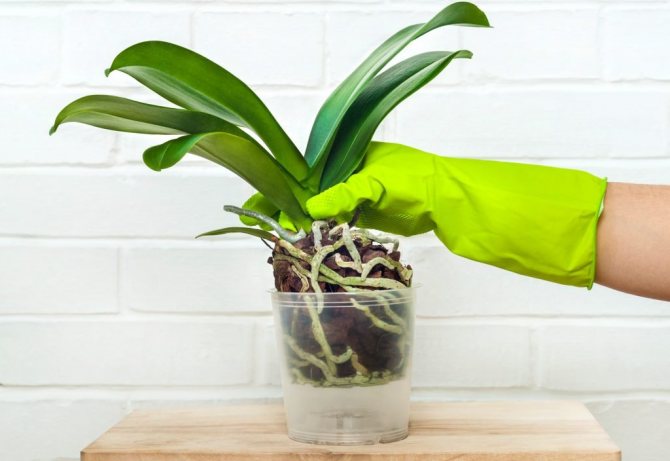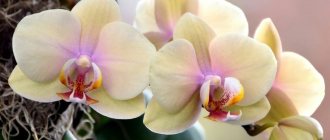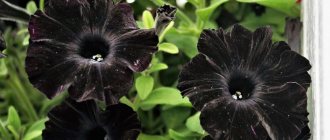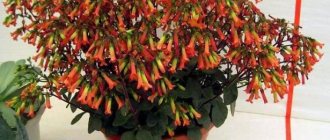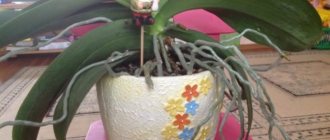What affects the flowering of an orchid at home?
As beautiful as the orchid flower, it is moody when grown at home.

In order for an orchid to bloom profusely, it needs good care.
But if you bring the climate closer to natural conditions, then you can observe flowering in several periods. To do this, you should perform and know a number of factors... Let's take a closer look: what to do to make the orchid bloom profusely?
Flower age
What to do to make the orchids bloom luxuriantly and beautifully again? Before you wish that the orchid bloomed, you need to know a little about her age. If the flower is grown with your own hands, then the signal for flowering will be the age, which varies from 1.5 to 3 years. It is during this period that the plant reveals its potential.
The duration of the period is explained by the type of flower and the condition of the content. During this period of time, up to 5-8 adult leaves should form.
Flowering too early can lead to death... Since the plant will not have time to accumulate strength. When buying orchids in a store, you should pay attention to the presence of adult leaves.
Plant location, correct lighting
The southern part of the house - the most optimal location for an orchid. At the same time, the plant requires shading from direct rays.
When buds are formed, it is already undesirable to move the pots even a few centimeters. Not to mention turning them around. All permutation procedures can be performed only with the formation of all the opened flowers.
This usually lasts 10 days. Then any corner of the house can be decorate with blossoming bunches flowers. The plant is not afraid of partial shade during this period.
When buying an orchid during the formation of peduncles, you should notice the side of the pot with which it is directed towards the light. Set houses in the same position. This will help him adapt in a short time.
Flowering time can come at any time of the year. The main thing here is to provide the plant with enough light. In winter, autumn time need artificial lighting.
Important! Use phytolamps as lighting devices. They have the ability to scatter light. And what is very important - do not dry the air space near the flower.
Ambient temperature and humidity
Lack of light prevents the orchid from blooming. And the buds that appeared suddenly dry up and fall off... Some growers mistakenly think that the whole plant needs artificial light.
In fact, this is not the case. Enough to illuminate top only peduncle. Daylight hours should be 10-12 hours.
The ambient temperature in the room plays a significant role. Its best parameters during the day are from 20 to 24 degrees C, at night: 15-18. When the difference is within 5-6 degrees.
In the summer season, the orchid can be take out to the balconywhere she will get a natural temperature difference. It is the drop that makes the plant bloom.


It is necessary to constantly monitor the temperature in the apartment.
In winter, you can equip mini fridge... Use a shoebox, for example, from shoes, and fence the pot from the outside of the window sill.
The temperature from the window will be lower than in the room.Such procedures should be continued at night for 10 days.
Potted orchids receive enough moisture from the soil... Therefore, there is no need to worry about humidity.
But specimens grown epiphytically, that is, on the bark, need it. And also those with weak roots. For this, use multiple methods to obtain the desired humidity:
- They put vessels with wet expanded clay;
- Capacity with water;
- Spray with hot water heated to 35 degrees;
- Install a humidifier.
Good microclimate is provided by flowersstanding next door.
Watering mode
At the time when the buds are pouring, watering should be moderate. Re-irrigate after complete drying of the substrate... Indeed, in nature, flowers are preparing for pollination during this period.
The insects that do this job do not fly in rainy weather... Therefore, you should also refrain from spraying.
Use water for irrigation well-separated and warmed up to 35 degrees C. In nature monsoon rains are heated to just such a temperature. You can use defrosted water after turning off the refrigerator.
Excess moisture can negatively affect the bud, it will simply wither and fall off.
Worth knowing! Before opening the flower, it is better to underfill the water than to pour it over.
Always link your actions with natural phenomena, then there will be no problems with flowering.
Some varieties of orchids love dried substrate during opening and flowering. Watering is best done in the morning; by the evening, the substrate should dry out.
Some species require re-watering on the third day, others after a month. Irrigation signal leaves can serve... They are visually made wrinkled. A day after the next watering, you can see that the leaf has straightened out and the wrinkles have disappeared.
In winter, install the flowerpot on foam plastic so that the lower layer of roots from the windowsill does not overcool.
Pot with orchids immersed in a container of water for 10 minutes so that all roots have access. Further, the water from the pan should be poured out or a pots should be used, where excess liquid will be drained.
Correct fertilization scheme
In nature, orchids receive nutrients from the air, dew droplets. Therefore, at home you can spray groundbait or add it in liquid form:
- To prevent the plant from getting chemical burns, the plant is watered 2 days before fertilizing;


Not in all cases the orchid needs to be fed. - The solution should be warmer than room temperature;
- The suggested dosage according to the instructions should be halved;
- Dip in nutrient solution for 15 minutes and remove to dry;
- After spraying, inspect the leaf axils, if drops have collected, blot with a napkin or toilet paper.
Eliminate draft and direct sunlight after procedures.
Types of feeding
Root
This type of feeding can only be used on healthy plants:
- Before starting the procedure, you need to moisturize the roots well.
- Dilute the fertilizer in water at room temperature in accordance with the proportions indicated in the instructions.
- The container with the flower should be slowly put into a basin with a solution (so that the liquid does not push the plant out of their pot), water the orchid with it from above, trying not to get into the leaf axils and buds, and then leave it in the basin for 20-25 minutes for further nutrition.
- After the specified time has elapsed, remove the flowerpot from the basin, allow the remaining solution to drain.
This procedure is best done in the morning, when the ability to absorb nutrients by the roots of the orchid is higher.
Outdoor
This type of feeding should be carried out when the root system is diseased or damaged.Such feeding should not be carried out in direct sunlight, as this can lead to burns. It is best to feed the plant with a spray bottle in the evening or in cloudy weather.
You need to spray both sides of each leaf and the visible part of the roots. Foliar top dressing is indispensable for chlorosis - lack of nutrients... With foliar feeding, nutrition very quickly enters the leaves, and the effect is already visible after a few hours.
It is prohibited to spray flowers. If drops of solution get on the buds, you need to dry them with a dry soft cloth.
Basic prerequisites for abundant flowering
Orchid bloom lasts 3 months, and some specimens, depending on the species, can please up to 8 months. For the abundant flowering of the orchid influenced by the following factors:
- As soon as all the buds open, the flower is rearranged in partial shade. In this case, the sun's rays will be unnecessary;
- Adhere to a cool temperature from 17 degrees C to 22;
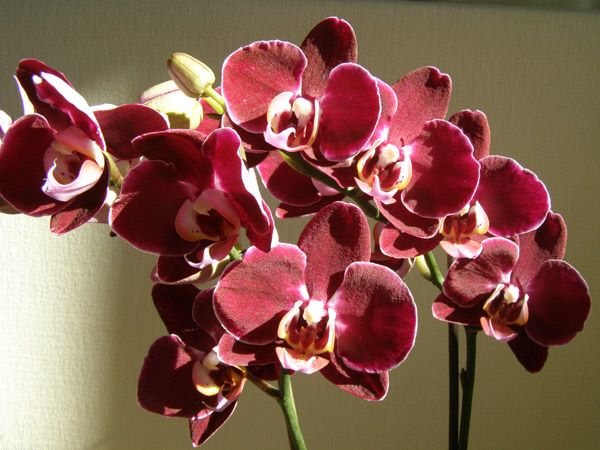

Several factors affect the abundant flowering of an orchid. - Fertilizer is completely excluded until the end of flowering. Any feeding will provoke premature withering of bunches of flowers;
- Watering is done once every three days by immersing the pot with warm water for 10 minutes. You should focus on humidity, with low humidity it can be more often, with high humidity - less often. White roots also serve as a signal;
- Spray periodically using a spray bottle.
Important! If you follow the recommendations, then the plant will thank you with a long flowering.
DIY organic solutions
The best fertilizers for orchids at home:
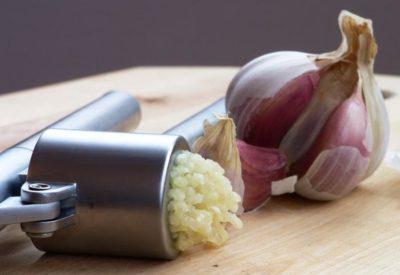

Garlic water... Garlic is very rich in vitamins, macro- and microelements, organic acids, sulfur, zinc, antioxidants, which are well absorbed and are an effective fertilizing and natural insecticide and fungicide. The solution is easy to prepare:- 1 liter of water (34-36 degrees) will require a gruel of 1 clove of garlic squeezed through a press;
leave the solution for 40 minutes, strain and apply as a root and foliar treatment.
- Horse dung dissolve in water and pour over the roots. You can also use dry manure for transplanting, spreading it between parts of the substrate and over the surface in small quantities.
- Dried Banana Peels need to be cut and soaked in warm water for several days. Then, with a strained solution, carry out root dressing. Useful to stimulate flowering.
Stimulation of the growth of peduncles
A plant with 5-8 leaves is ready to bloom. But how to increase the growth of an orchid? In order for the peduncles to grow more actively, they use growth stimulants, i.e. fertilizer:
- In order for the orchid to accumulate strength for the period of lush flowering, it is necessary to start feeding from the moment of active vegetation of leaves, peduncles, buds;
- As soon as the first bud opens, fertilization is taboo;
- The plant needs nitrogen (N), potassium (K), phosphorus (P) and other trace elements;
- Nitrogen is in the lead for growing green mass;
- When a peduncle appears, potassium and phosphorus are added to the bait more. Potassium stimulates the formation of kidneys, increases the immunity of the plant, actively participates in the metabolism. Phosphorus stimulates growth, the flowering process, forms the root system;
- Supplements in the form of magnesium and boron allow the main components (N, P, K) to be absorbed;
- The acidity should correspond to pH 5.5-6.5. You can check it with indicator plates. Deviation from the normal level leads to the fact that the main components will not be absorbed. This is in the case of high acidity. With an increase in the alkaline environment, boron, iron, and copper are not assimilated.
Rules for feeding with drugs
During active growth, liquid NPK fertilizer must be applied in a ratio of 8: 3: 5.
When a peduncle appears, the dosage of NPK changes 2: 6: 6.
Top dressing is carried out every 2 weeks if the activity falls during the summer period. In winter power gap is 30 days.
Fertilizers should be alternated on root and superficial. Frequency will prevent the roots from getting burned. During spraying, the dosage from the instructions should be halved, for complex fertilizers - by 3-4 times.
Freshly transplanted plants are not fed, as in the composition of the substrate there are nutrients.
Recommended drugs
How to feed orchids? Florists recommend using liquid fertilizers... The most popular ones are:
- "Greenworld" (Germany) - before use, shake and dilute according to the instructions for the root system 10 ml per 3 liters of water, in case of spraying, reduce the dosage by 2 times. The solution is brown, odorless. During spraying, remove excess moisture from growth points;
- Bona Forte (Russia) - complex fertilizer. Stimulates re-flowering;
- "Kemira-luxe"... Judging by the reviews of florists, it takes the leading place. There are no complaints about him;
- Substral, Etisso and BioEkor also have a lot of fans;
- "Flora"... It contains natural ingredients. Fertilizer is used for foliar feeding. The container is equipped with a spray.
Advice! Look at the label for the amount of NPK in the solution. So that you can decide at what stage the fertilizer should be applied.
How to fertilize an orchid
In addition to mineral preparations, do not forget about organic products:
- thicker than sleeping coffee;
- tea leaves;
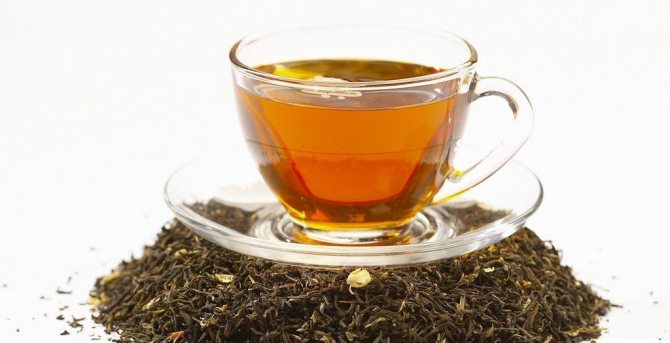

Tea leaves as fertilizer for orchids
- bird droppings;
- banana peel.
These funds can be used, but according to the recommendations of specialists. The coffee grounds must be roasted in the oven before use. It will increase the looseness of the soil.
Pure black tea brew will act as a natural fertilizer. Banana peels can be infused with water, dried or dried.
Chicken droppings must be diluted with water so that the final concentration of the solution is no more than 0.05%.
As complex factory-made products that can be used to fertilize orchids are:
- "Mister color wagon";
- Fertimix;
- Dr. Foley;
- "Green guy".
In flower shops you can see other preparations for feeding your blooming beauties.
Questions From Readers About Blooming:
How to increase the duration?
Until the buds fully open keep the plant in a well-consecrated place, not less than 12 hours. Then rearrange the flower to another place with a lower temperature. Do not fertilize them during flowering.
When is stress good?
Not all stress is detrimental to flowers. Some of them stimulate flowering... For example, the difference between night and day temperatures by 4-5 degrees C, overdrying of the substrate. It is necessary to expose such stresses during the period when the plant has up to 8 leaves, that is, it is ready to bloom.
How does a sharp temperature drop affect?
There is a concept useful and tolerable temperature... When nighttime readings vary between 15-18 degrees C and daytime readings between 20-24, the tolerable values are 15 and 24 degrees C, respectively.
The temperature in the intermediate section is useful. Any deviation of the transferred values in one direction or another leads the plant to stress.
Why does the death of old roots provoke a process?
When old roots die off reduced suction capacity plants. It turns out a lack of moisture, which provokes the laying of flower buds. From where the peduncle is pulled out, then the buds.
How does reduced watering affect bud blooming?
Buds hungry for disclosure ready for pollination... Just when there is no rain. Orchids also react to lack of moisture. Therefore, they are revealed.
Why do orchid leaves wither?
Overheating and direct sunlight, even if shaded, have a negative effect not only the leaves, but the flower as a whole. It should be transferred to partial shade.
When you don't need to feed a flower
As soon as people buy a flower, they immediately feed it so that it begins to bloom. But before fertilizing, you need to read the standard rules for caring for orchids:
- When it comes to these plants, you need to know that as soon as you have acquired a new "pet" - it needs to be transplanted.
- At first, the flower does not need to be fed, since in the process of its flowering in greenhouses it received constant balanced nutrition. And if you immediately begin to actively fertilize the soil, this threatens with the loss of inflorescences.
- You cannot feed a plant that has just got sick, weakened, or has been recently transplanted. For this, there are special drugs that support his immunity. They are also suitable for feeding orchids during flowering.
- The plant should not be fertilized when it is dormant (after flowering).
Fertilizer for a plant to bloom
In spring and autumn, fertilizers are applied twice a month., in summer and winter - once.
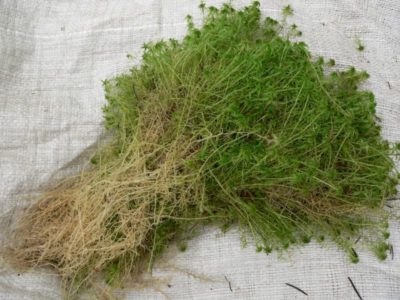

For one-time feeding:
- Peat moss sphagnum - excellent, permanent fertilization, and, at the same time, drainage.
- Blank sheet in sticks... One or two sticks are enough for three months. Suitable for a nutritious diet.
For permanent:
- Embiko Orchid... Submitted every 10 days.
- Fertika-suite... For year-round use, as well as before flowering.


